Multiphase flow behavior in microscale is governed by the balance between capillary and viscous, or viscoelastic in case of polymer solutions, forces. Fundamental understanding of capillary hydrodynamics in microchannels may lead to important technology development in different areas, including fabrication of monodispersed micro and nano dispersions, food science, biology, reactors and enhanced oil recovery.
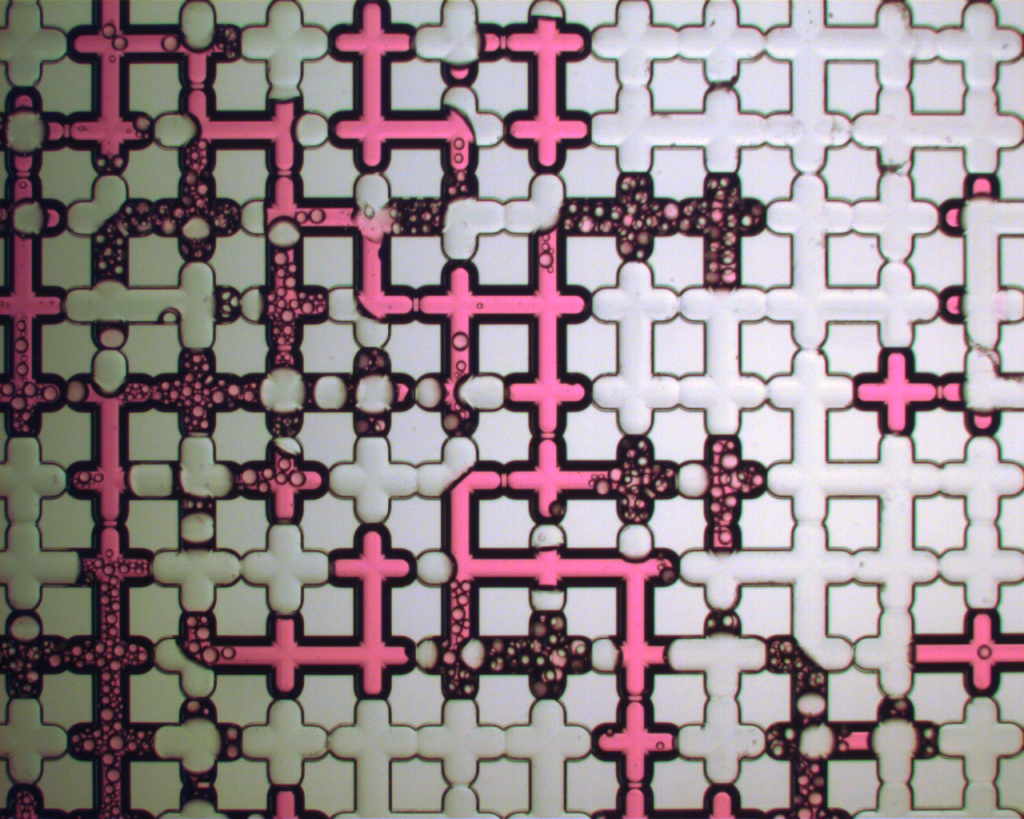
Our research in microfluidics is focused in two different areas: design and fabrication of monodispersed microcapsules with tunable properties for flow control in porous media and target delivery of chemicals, and as a platform for visualization of two-phase flow in porous material.

Microfluidic techniques have enabled the development and fabrication monodispersed microcapsules from double emulsion template with tunable properties. In principle, these systems can be designed as mobility control agent in the flow through porous media and also as a vehicle for target and controlled chemical delivery, with great potential for applications in pharmaceutical, medical and oil industries.
The use of 2D and 3D microfluidic devices as a transparent porous media has enabled the fundamental understanding of pore-level complex flow phenomena. We have used optical microscope to study wettability effect and oil displacement by complex fluids in 2D models of porous space. The work is now being extended to 3D porous materials by using confocal microscopy and x-ray micro tomography.
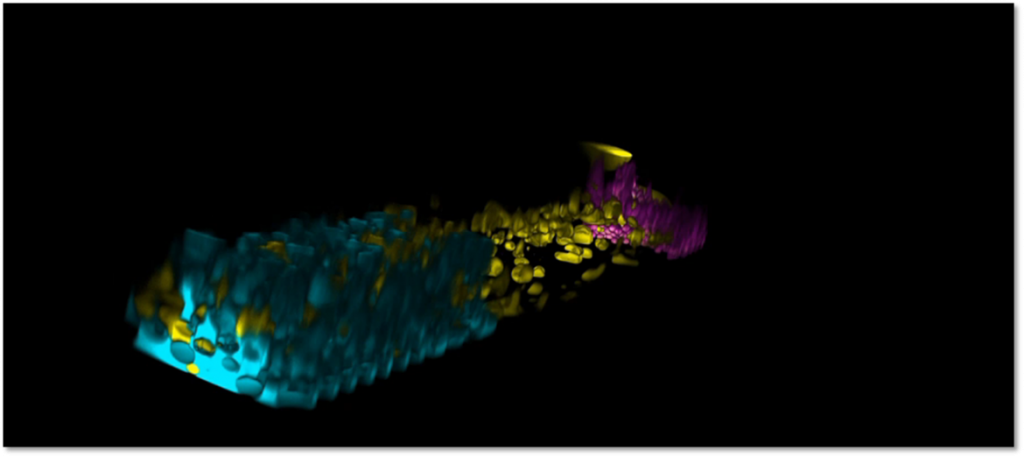
Recent and current research projects:
Monodispersed microcapsules
Microcapsules can be used as vehicles for active compounds to be delivered at specific position and time by controlling the rupture of the capsule shell. We extended the use of elastic microcapsules to control the flow of a water phase in porous media by blocking the preferential flow paths. We are producing monodispersed microcapsules using microfluidics for different applications, including enhanced oil recovery, gastro-resistant capsules for food ingredient delivery and polymer gelation process.
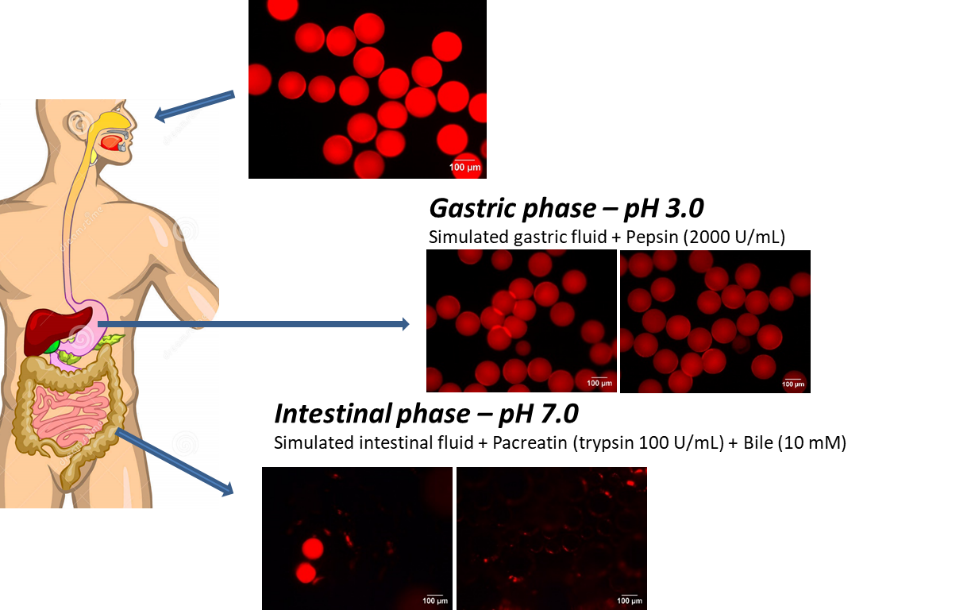
Recent Publications:
- Y.H. Huang, F. Salmon, A. Kamble, A. Xu, M. Michelon, B. C. Leopercio, M. S. Carvalho e J. M. Frostad, “Characterization of Mechanical Properties of Gellan Gum Microcapsules by a Cantilevered-Capillary Force Apparatus”, submitted for publication, Soft Matter, 2020.
- M. Michelon, B. C. Leopercio e M. S. Carvalho, “Microfluidic production of aqueous suspensions of gellan-based microcapsules containing hydrophobic compounds”, Chemical Engineering Science, vol. 211, 115314, 2020.
- D. do Nascimento, J. A. Avendano, A. Mehl, M.J.B. Moura, M. S. Carvalho and W. J. Duncanson, “Flow of Tunable Elastic Microcapsules through Constrictions”, Scientific Reports, vol.7, 11898, 2017.
Complex pore-scale flow in oil displacement process.
Macroscopic multiphase flow phenomena in porous media can only be fully understood through a fundamental comprehension of the complex multiphase flow at the microscopic scale. Recent improvements on the fabrication techniques of microfluidic devices have led to a growth on the use of flow visualization at the pore scale to gain specific information on oil and water occupation of the pore space and trapped oil ganglia. We have studied different pore scale phenomena in oil displacement process both in 2D and 3D model porous media using different techniques, including fluorescent and confocal microscopy. These studies include the effect of wettability on oil displacement, injection of viscoelastic polymer and dispersions and the formation of foams.
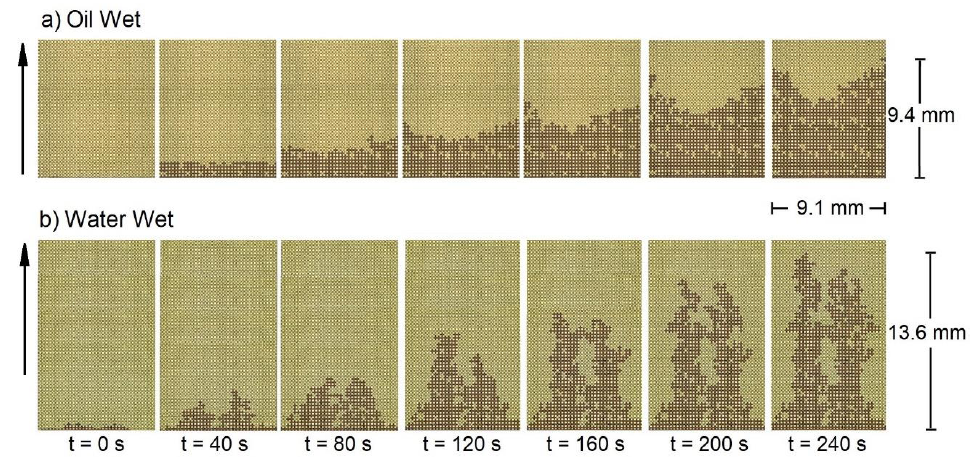
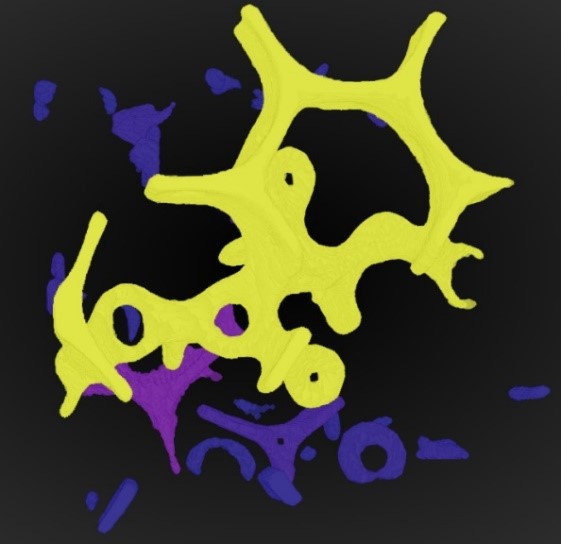
Recent Publications:
- J. A. F. Gutiérrez, M. J. B. Moura and M. S. Carvalho, “Dynamics of viscoelastic flow through axisymmetric constricted microcapillary at high elasticity number”, submitted for publication, Journal of Non-Newtonian Fluid Mechanics, 2020.
- D. F. do Nascimento, J. R. Vimieiro, S. Paciornik e M. S. Carvalho, “Pore Scale Visualization of Drainage in 3D Porous Media by Confocal Microscopy”, Scientific Reports, vol. 9, 12333, 2019.
- J. Avendaño, N. Lima, A. Quevedo e M. S. Carvalho, “Effect of surface wettability on immiscible displacement in a microfluidic porous media”, Energies, 12(4), 664, 2019.
- A. Gholamipour-Shirazi, M.S. Carvalho e J. O. Fossum, “Controlled microfluidic emulsification of oil in a clay nanofluid: Role of salt for Pickering stabilization”, European Physical Journal Special Topics, vol. 225, 757–765, 2016
